Tips from a Pro: Using Trees for Dramatic Landscape Photography
“Landscape photographers have a love affair with trees,” notes Charlie Waite, the celebrated British photographer whose scenic studies over many years reveal his deep reverence for the subject. Here he tells us about his distinctive approach to picturing trees in the landscape
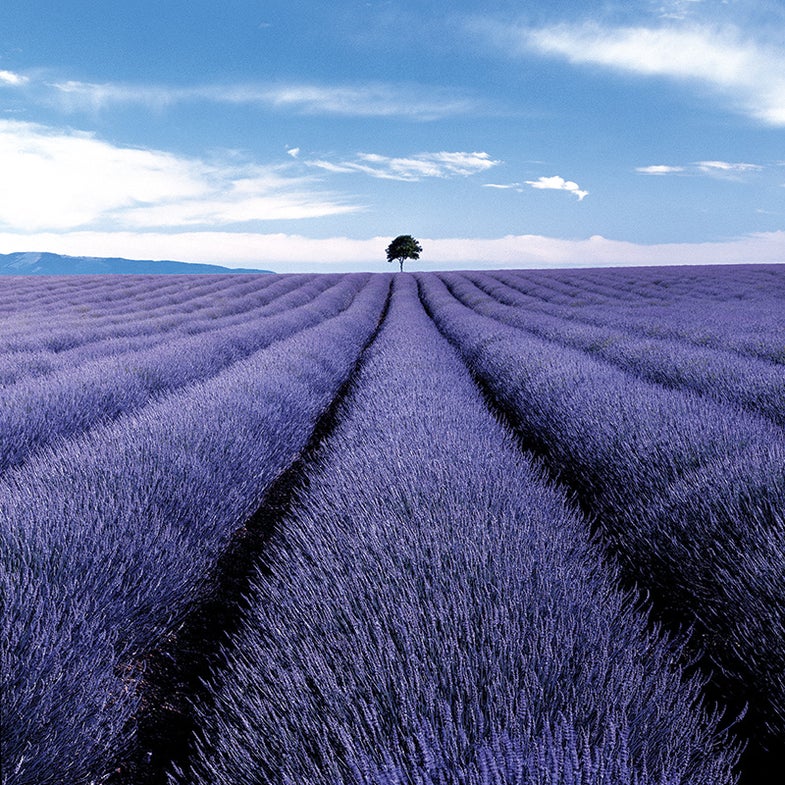
Whether en masse or standing nobly on their own, trees play a huge environmental and emotional role in all of our lives. The tree, in many parts of the world, is our seasonal barometer. If we are lucky enough to have a tree in our garden, we will know its character and personality and enjoy a real and meaningful relationship with it. Because of our familiarity with trees—their height, girth, color, and shape—they play a crucial role in providing the viewer of a landscape photograph reference points for depth, distance, and dimension within the image. (I call this DDD.) Trees help to delineate the landscape and, as with cloud shadows, can create a three-dimensional effect in photographs.
ENTER OUR JANUARY PHOTO CHALLENGE: TREES
Framing It Up
A tree needs to express its character, its setting, and its sense of nobility. Trees in random volume don’t speak to me. But trees in an orderly, regimented design do. Therefore, I am always looking for the tree that stands alone or trees in an organized collection. There is no telling where those might be, so I often spend hours driving in search of them.
There is no typical shot setup: Each potential image brings with it a different set of considerations involving design, shape, pattern, color, relationships, depth, and so on. Symmetry plays a role, too. I am careful to avoid verticals bisecting horizontals, if I can. In all situations, a tripod is mandatory.
A wide-angle lens can suggest that the area being photographed is more expansive than it really is, and the eye and the brain can detect whether the lens used was extremely wide. The lens that I like to use, and did for many of these images, is the 50mm lens on a 6x6cm camera (roughly the equivalent of 28mm on 35mm format) because to me, it seems to equate to human vision.
My other lens preference is short telephoto, as I don’t care to compress planes within a landscape too extremely. I want viewers to feel that if they were standing by my side, their vision would match my own. Many of my landscape photographs are in a square, or nearly square, format. The square promotes the tree as a center-stage player, given that space above, below, and to the sides can be of even proportions.
Damme, Belgium. Trees fade into mist for the shot, center, made with a Nikon D3S and 24–120mm f/4G AF-S Nikkor lens, at full tele for mild compression. Exposure: ¼ sec at f/22, ISO 200.
Light and Season
Lighting, the catalyst to all photography, should be at the forefront of any photographer’s mind. Front light produces flat, unatmospheric, sterile, shallow images. But backlighting is excellent for silhouettes, particularly if the shape of winter branches offers great design and rhythm.
Direct overhead light—which photographers often reject—can deliver pools of shadow that can be very intriguing. I used this technique in the image of the “bobble trees.” Mist, rain, and overcast conditions can provide images that convey atmosphere.
In northern climes, we seek the ravishing yellows and reds of fall color, bringing thousands to gawp and wonder—for those screamingly vivid colors, the photographer will travel hundreds of miles.
The winter months can transform the tree to create a skeletal and often haunting look, with its naked branches perhaps fringed with snow. Many a landscape photographer enjoys the near-monochrome look of the deciduous winter tree and may prefer its boniness to an evergreen slumped under the weight of snow. In winter, the shape of the branches, which at any other time play a secondary role, now have to be considered for their form and their muscular nature.
Onward to the moist and shiny leaves of spring, reflecting so much infrared radiation that infrared photography enthusiasts can have a field day taking the viewer straight back to winter. With my color photography, I often trip myself up by using a polarizing filter to remove the white-light reflection from some of the reflective leaves, only to find that green, one of the trickiest colors to render correctly, turns almost fluorescent. You would think I would have learned by now!
Then to the summer swelling of our trees, where the muscular limbs of the mighty oaks can barely be seen through the many thousands of leaves. (I have learned that an average-sized oak will drink 50 gallons of water per day.) In my experience, the fully-leafed summer tree can look lumpy and without form, rendering the landscape thick, dense, and hard to delineate. For these reasons, summer in the northern hemisphere is my least favorite season for photographing trees.
Buttermere, Cumbria, U.K.A shaft of sidelight cutting through the mist defines a lone tree against the mountain. The photographer used a Nikon D700 with 24–120mm f/4G AF-S Nikkor lens to make the exposure of 1/60 sec at f/16, ISO 200.
Don’t Overdo It
The brain and the eye are an amazing double act. Together, they are able to detect falsity and unrealistic colors, and on doing so go into automatic reject mode.
Thus the polarizer is a dangerous filter. It isn’t just the sky, the water, and the land that it affects; it is all of them at different times, in different lighting scenarios. Look through the polarizer off-camera to establish the effect it has on everything before deciding whether to use it or not. Remember that the polarizer reduces white-light reflection and can increase contrast. With a cloudless sky, it can produce unrealistic violet or indigo blues. Graduated (split) neutral-density filters, on the other hand, may be crucial in order to reveal, in high contrast scenes, subtle nuances in the sky that the photographer wishes to preserve.
Getting it right in the camera is its own reward, but digital manipulation is not a crime. Yet its use should be as an enhancement of the photographer’s artistic intention. Contrast, minimal sharpening, and minor cleansing are all that I would recommend. Like sharpening, increased saturation should be applied with great care.
This past fall, I found myself in Colorado thinking that no one would accept the natural rendition of yellow, no doubt accusing me of massive oversaturation. What is a landscape photographer to do except subdue the colors of nature at the risk of being thought dishonest and fraudulent?
_**Ticino Valley, Italy. **A stand of trees (top right) contrasts with the field’s golden tones. Exposure was on Fujichrome Velvia 50 in a Hasselblad 500CM body._
On the Avenue
Whichever season it may be, trees will more often than not arrest the photographer, and it is no secret that my “tree fix” often comes with a tree avenue. If anyone shares my love of an avenue of trees, it seems to me to be important to maintain the secrecy and mystique by denying the outside world a look in. A chink of light seen high up in the frame, be it from the blue sky or a white-sky highlight, may serve to undermine the feel of a majestic nave of a cathedral.
I remember years ago making an image of an avenue of trees that offered a perfect shape of a bottle of white wine at the far end and, without wishing to sound too fanciful, it seemed to me to haul the viewer through, and outward, toward the bright light of hope.
I shall be forever attracted to the tree avenue and always find myself evaluating its uniformity before I commit to setting up; it’s no good having a gap where a tree may have been felled, and where a stream of light may attract the eye to a break of continuity.
But what landscape photographer can resist the lonely tree? I know that I am unable to do so.
Ronda, Andalucia, Spain. Overhead light creates a near-abstraction. Same camera and film, this time with 250mm f/5.6 Carl Zeiss Sonnar lens (roughly 140mm in 35mm).
Charlie Waite has just launched the USA Landscape Photographer of the Year competition, for which Popular Photography serves as a media sponsor. For details, see usalandscapephotographeroftheyear.com.
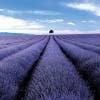
Valensole, France.
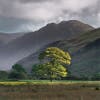
Buttermere, Cumbria, U.K.
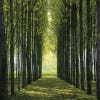
Lot, France.
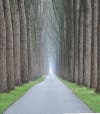
Damme, Belgium.
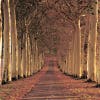
Épernay, France.
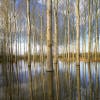
Amiens, France
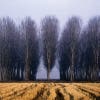
Ticino Valley, Italy
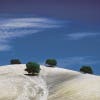
Ronda, Andalucia, Spain